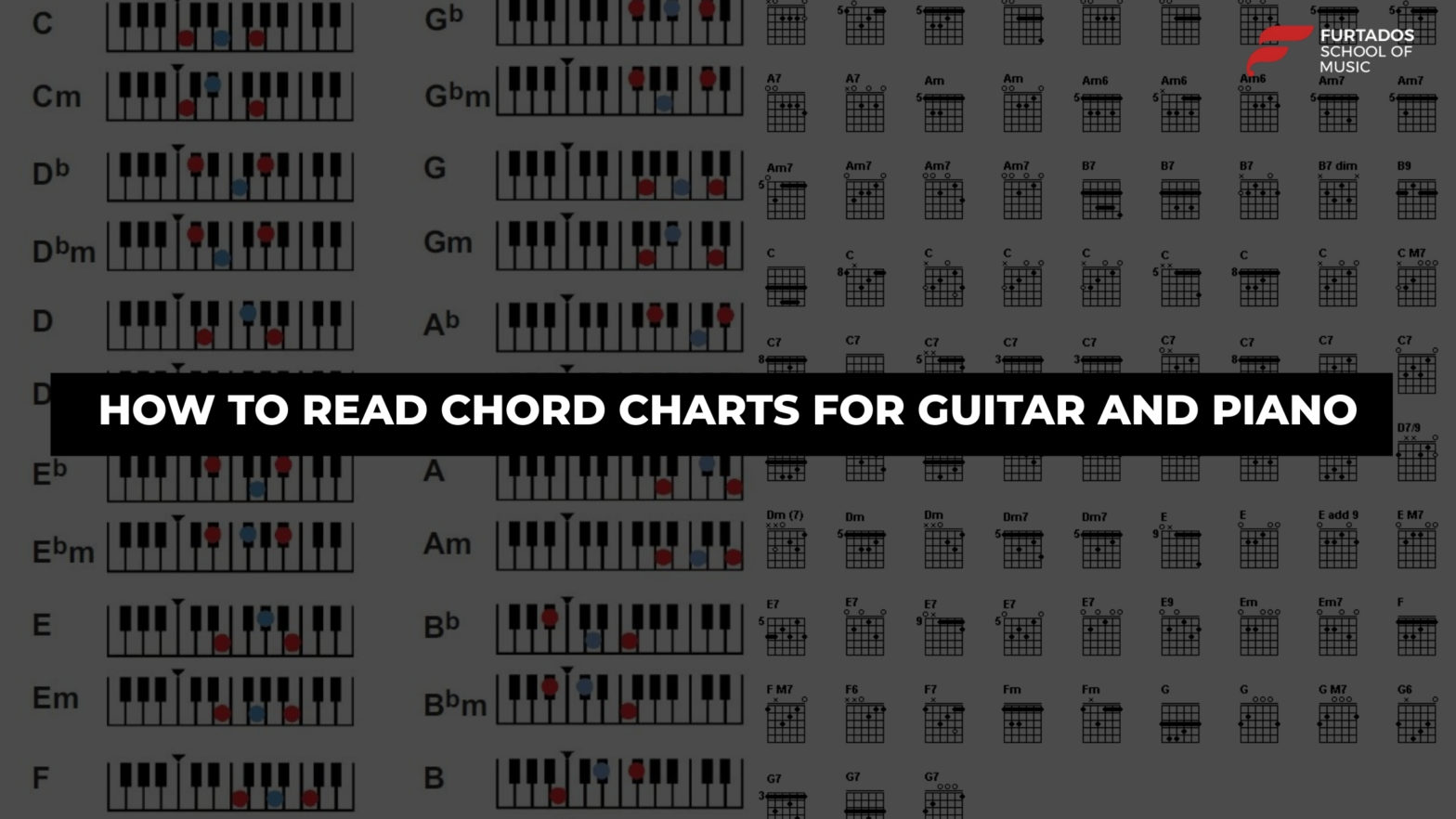Learning to read a Chord Charts for Guitar and Piano is essential for any beginner looking to play songs and understand musical structures. Chords form the foundation of most music, and knowing how to interpret Chord Symbols can make learning an instrument much easier. Whether you are picking up a guitar for the first time or starting with the piano, this guide will help you read chord charts with confidence.
What is a Chord Chart?
A chord chart is a visual representation of a chord that shows which notes to play on an instrument. It is widely used in music books, online tutorials, and sheet music to help musicians quickly learn and play songs. Both Guitar Chord Charts and Piano Chord Charts use different methods of notation, but the purpose remains the same—to guide musicians on finger placement and note selection.
How to Read a Guitar Chord Chart
A Guitar Chord Chart is a diagram that represents the guitar fretboard from a top-down perspective. Here’s how to read it:
- Vertical Lines – These represent the six strings of the guitar. The leftmost line is the low E string (thickest), and the rightmost is the high E string (thinnest).
- Horizontal Lines – These indicate the frets. The top horizontal line is usually the nut of the guitar, while the lines below it represent the frets.
- Numbers and Dots – Dots on the diagram show where to place your fingers. Some charts also include numbers inside the dots to indicate which finger to use (1 for index, 2 for middle, etc.).
- ‘X’ and ‘O’ Symbols – An ‘X’ above a string means it should not be played, while an ‘O’ means you should play it open.
Example: C Major Chord
e|—0—
B|—1—
G|—0—
D|—2—
A|—3—
E|—X—
In this example, you press down on the 3rd fret of the A string, the 2nd fret of the D string, and the 1st fret of the B string, while playing the G and high E strings open. The low E string is not played.
How to Read a Piano Chord Chart
A Piano Chord Chart uses a different visual representation, typically showing a keyboard layout with highlighted keys. Here’s what to look for:
- White and Black Keys – A standard piano has white and black keys, and the chart will mark which ones to press.
- Finger Numbers – Some charts include finger numbers (1 for thumb, 2 for index, etc.) to guide hand positioning.
- Chord Symbols – Instead of tablature like guitar, piano players rely on Chord Symbols to recognize the structure of a chord.
Example: C Major Chord on Piano
- Notes: C – E – G
- Played using fingers: 1 (thumb), 3 (middle finger), and 5 (pinky) on the right hand.
A Piano Chord Chart helps beginners quickly find and play chords without needing to read full sheet music.
Understanding Chord Symbols
Chord Symbols are shorthand notations used in both Guitar Chord Charts and Piano Chord Charts to indicate which chord should be played. Here are some common examples:
- C – C Major
- Cm – C Minor
- C7 – C Dominant Seventh
- Cm7 – C Minor Seventh
- Cmaj7 – C Major Seventh
These symbols apply to both guitar and piano, helping musicians quickly identify the type of chord required for a song.
Why Choose Furtados School of Music?
If you’re a beginner looking to master the Guitar Chord Chart or Piano Chord Chart, structured learning is essential. Furtados School of Music (FSM) offers world-class music education designed for learners of all ages.
Courses Offered at Furtados School of Music
FSM provides:
- Guitar Courses – Covering everything from basic chords to advanced techniques.
- Piano Courses – Teaching students to play melodies, chords, and read Chord Symbols effectively.
- Vocal and Other Instrumental Courses – Including drums, violin, and more.
Why Parents Should Choose FSM for Their Children?
- Expert Faculty – FSM has highly trained and experienced teachers.
- Structured Curriculum – Lessons are designed to gradually build skills and confidence.
- Innovative Teaching Methods – FSM incorporates technology and creative learning to make lessons engaging.
- Performance Opportunities – Students get to showcase their progress in concerts and recitals.
Conclusion
Reading a Guitar Chord Chart and Piano Chord Chart is a fundamental skill that makes playing music easier for beginners. By understanding Chord Symbols, learners can quickly grasp chord structures and start playing their favorite songs. If you’re serious about learning, enrolling at Furtados School of Music is a great way to build a strong foundation. Their structured courses and expert guidance ensure that every music aspirant gets the best start on their journey.
Start learning today and unleash your musical potential with FSM!
